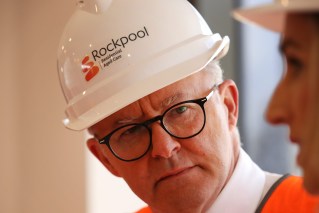Going down: Inflation hits two-year low; mortgagees have reasons to be cheerful
Borrowers are likely to be spared more interest rate pain next week after a surprisingly soft inflation result.

The Australian Bureau of Statistics consumer price index moderated by more than expected to 4.1 per cent, down from 5.4 per cent at the last quarterly update in September.
Over the year’s final quarter, it weakened from 1.2 per cent in the three months to September to 0.6 per cent – the smallest increase in almost two years.
ABS head of prices statistics Michelle Marquardt said the rate of inflation was well down from its peak twelve months ago.
“While prices continued to rise for most goods and services, annual consumer price index inflation has fallen from a peak of 7.8 per cent in December 2022, to 4.1 per cent in December 2023,” she said.
The trimmed mean, a key measure of underlying inflation that cuts away irregular or temporary price changes, sunk to 4.2 per cent, down from 5.1 per cent in the September quarter.
Forecasters expected a convincing slowdown in December but the result was even softer, with a 4.3 per cent annual increase in the headline result pencilled in and 0.8 per cent on a quarterly basis.
Jarden chief economist Carlos Cacho said the Reserve Bank would be pleased to see headline and trimmed mean numbers materially below their own forecasts.
“They were expecting that year-end inflation for December was going to come in at 4.5 per cent for both headline and trimmed mean … instead we’ve got 4.1 and 4.2,” Mr Cacho told ABC TV.
But he said the details were “a little less positive” and revealed subdued progress on services inflation, a key focus for the central bank.
The main contributors to the December quarter increase were housing (rising one per cent), alcohol and tobacco (rising 2.8 per cent), insurance and financial services (rising 1.7 per cent), and food and non-alcoholic beverages (rising 0.5 per cent).
The housing category was bolstered by a 1.5 per cent increase in new dwellings bought by owner occupiers, which was higher than the 1.3 per cent rise in the September quarter.
Ms Marquardt said higher labour and material costs contributed to price rises in new home construction.
Rents recorded a softer 0.9 per cent quarterly increase, lower than the 2.2 per cent lift recorded in September.
The ABS said higher Commonwealth Rent Assistance, bolstered by the federal government at the last budget, helped contain price growth across rentals.
Insurance grew by a robust 3.8 per cent over the three months, up from a still-strong 2.8 per cent rise in the September quarter.
“The increase in insurance was due to higher premiums across motor vehicle, house and home contents insurance,” Ms Marquardt said.
The inflation figures will set the scene for the year’s first cash rate meeting on Tuesday.
The central bank has been lifting interest rates in a bid to bring inflation back within its two-three per cent target range.
Combined with softer retail sales numbers and weakening labour market data, Mr Cacho said the RBA was likely to stay on hold in February.
“It certainly makes a strong case for the RBA to remain on hold, and so the market is going to continue to expect cuts coming at some stage this year.”
Treasurer Jim Chalmers said the numbers were “very encouraging”.
“But it’s not mission accomplished yet, because we know people are still under the pump,” he told reporters in Melbourne.
“And that’s why we want to give a bigger tax cut for middle Australia from the first of July.”












